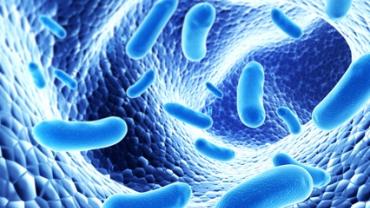
Everyone has suffered from diarrhea at one time or another from mild to severe. It may stem from an acute infection or from a chronic inflammatory bowel disease. Either way diarrhea can be debilitating. Traditional medicine usually prescribes antibiotics for these infections and as I discussed last week these medications have a negative impact on the gut microbiome.
In a recent article published two months ago in the journal Microbiome researchers at Michigan State University focused on treatments that impact the intestinal microbial communities in order to prevent diarrhea.
The majority of diarrhea cases are caused by 31 different foodborne pathogens which are responsible for more than 9.4 million infections approximately 56000 hospitalizations and over 1300 deaths each year.
In this study most of the patients had an increase in the level of Escherichia bacteria that are commonly found in the intestines and that can sometimes be pathogenic.
In comparison to the uninfected patients in the study the patients who were infected with four different diarrheal pathogens (Salmonella Shiga toxin-producing E.coli Campylobacter and Shigella) all had increased levels of Escherichia. Furthermore these patients had a decrease in the Escherichia population after they recovered from their illness.
These findings are of significance because treatment can be focused to control the levels of Escherichia in cases of severe diarrhea and/or to promote the growth of microbial populations that are important for healthy gut function.
Bacteriophages a forgotten therapy are the perfect solution here. They can be used for both prophylactic and therapeutic applications against bacterial infections. Although phages are not very well known they are one of the most abundant naturally occurring organisms on Earth. They can be found everywhere from the soil to drinking water. They only prey on bacteria never human cells and the bacteria have a difficult time becoming resistant to them. Phages are great because they are species specific meaning different strains attack different bacteria. For example these phages are specific to these E. coli strains: E.coli 12 E.coli B 16 ETEC strains and 2 EHEC strains. This makes them harmless to human cells and even to non-targeted bacteria. This is much different than antibiotics that can wipe out all the beneficial bacteria of the gastrointestinal tract along with the harmful bacteria. Phages are classified as prebiotics and there are specific phages that can infect and inhibit the growth of E. coli only as well as provide probiotics to support an optimal microbial balance.
In addition Saccharomyces boulardii is also great to use in combination with bacteriophages for prophylaxis and treatment of diarrheal diseases caused by bacteria. This nonpathogenic yeast has been used successfully over the past 30 years for these conditions. S. boulardii has demonstrated its effectiveness in gastrointestinal diseases with a predominant inflammatory component indicating that this probiotic may interfere with cellular signaling pathways commonly seen in many inflammatory conditions.
S. boulardii has been tested for clinical efficacy in several types of acute gastrointestinal conditions including antibiotic-associated diarrheaClostridium difficile infection acute diarrhea enteral nutrition-related diarrhea travelers diarrhea Crohns disease ulcerative colitis IBS and Helicobacter pylori infections.
Probiotics and bacteriophages that support an optimal microbial balance and more rapidly decrease Escherichia can decrease the burden of intestinal infections and facilitate quicker recoveries.
By Michael Jurgelewicz DC DACBN DCBCN